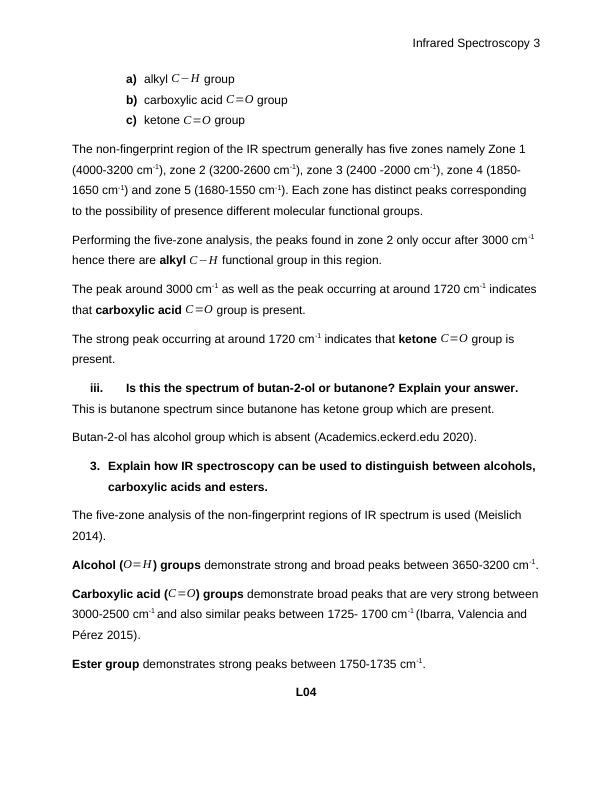Principles Behind Infrared Spectroscopy
Access to Higher Education Chemistry Assignment Brief A: Chemical Spectroscopy - This assignment requires students to understand and interpret infrared spectroscopy, specifically focusing on characteristic absorption frequencies and their corresponding bond types.
8 Pages1485 Words11 Views
Added on 2022-08-17
Principles Behind Infrared Spectroscopy
Access to Higher Education Chemistry Assignment Brief A: Chemical Spectroscopy - This assignment requires students to understand and interpret infrared spectroscopy, specifically focusing on characteristic absorption frequencies and their corresponding bond types.
Added on 2022-08-17
ShareRelated Documents
End of preview
Want to access all the pages? Upload your documents or become a member.
Chrolo-butane has a molecular mass of 9.2 g/mol..
|4
|190
|23
CHEMICAL SPECTROSCOPY Unit Code: 1384064
|17
|3413
|13



